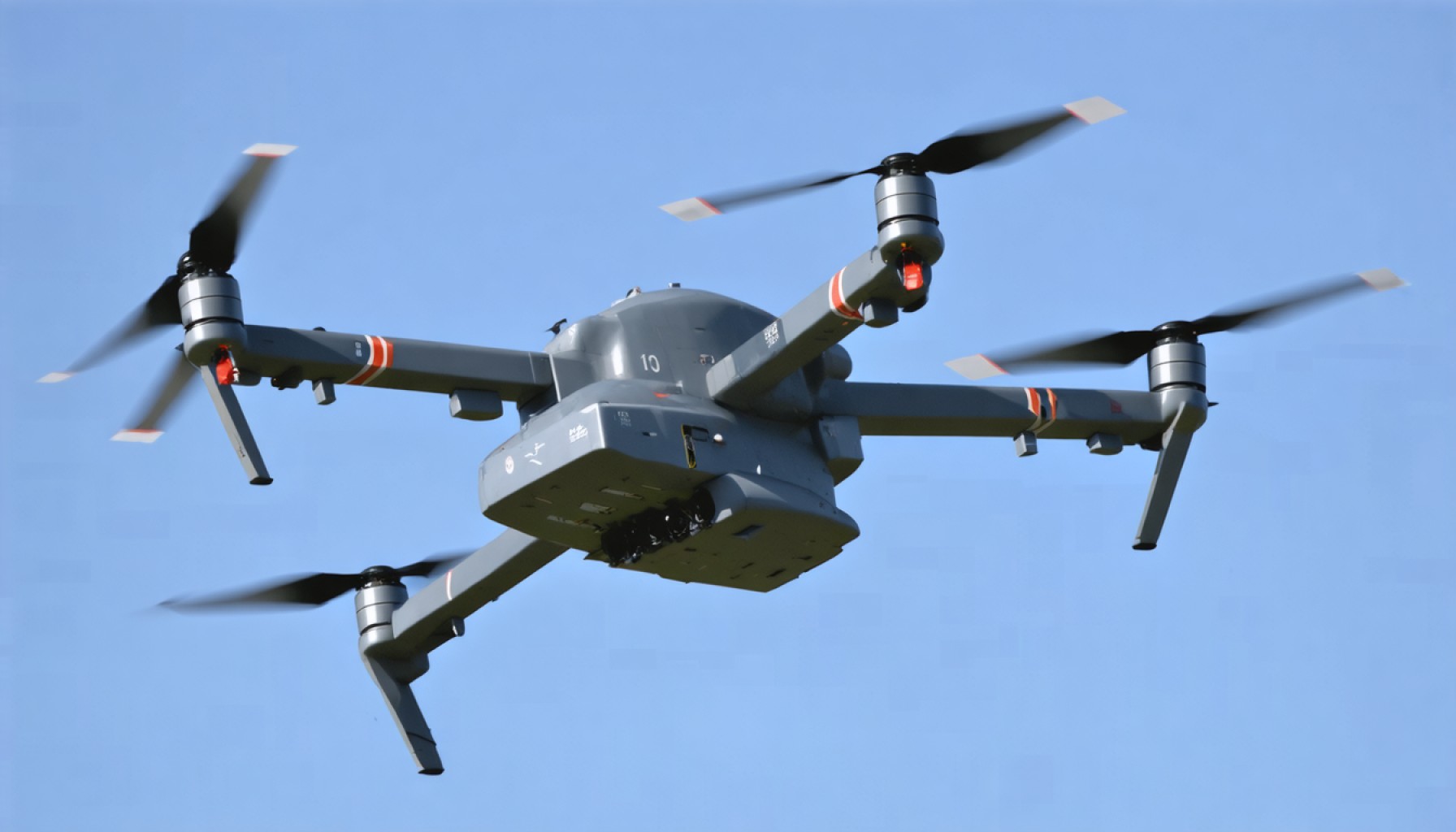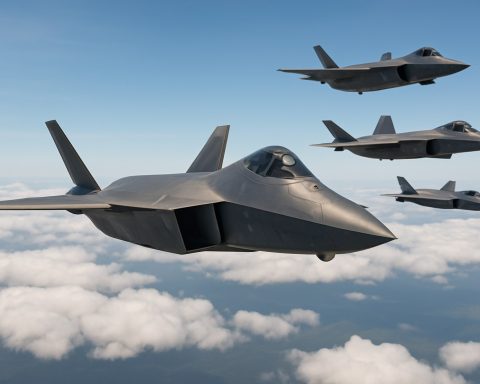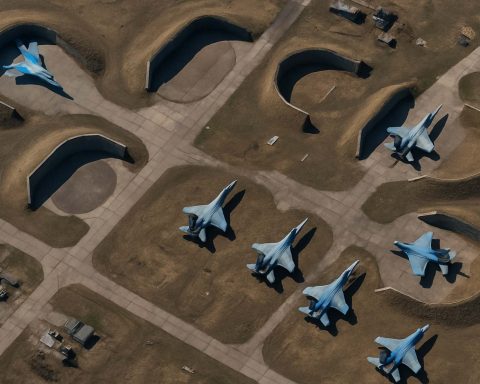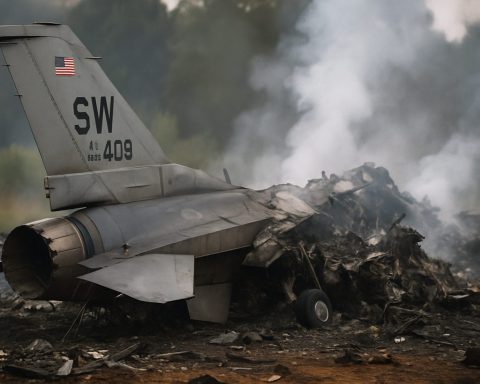- Japan’s Air Self-Defense Force faced a record 30 scrambles in fiscal 2025 due to heightened Chinese drone activity over the Nansei Islands.
- China’s military moves include TB-001, BZK-005, and GJ-2 drones, signaling increased surveillance ambitions near Japan.
- The drones’ proximity to Taiwan highlights the Sino-American rivalry, with Taiwan as a strategic flashpoint.
- China’s aggressive naval actions, especially around the contested Senkaku/Diaoyu Islands, raise alarms in Japan and internationally.
- Japan emphasizes stronger alliances and international coordination to counterbalance China’s military expansion.
- The ongoing tensions underscore the fragile peace in East Asia, calling for balanced military readiness and diplomatic discourse.
- Japan aims to align its defense strategies with allies to ensure regional stability and peace.
A surge in the cat-and-mouse game between Japan and China unfolds in the skies above the Nansei Islands, where the Japanese Air Self-Defense Force finds itself persistently shadowing an increasing number of Chinese military drones. In the fiscal year ending March 2025, Japan scrambled its fighter jets 30 times, marking an unprecedented peak in aerial tension since these operations commenced in 1958. This rise underscores a palpable shift in the strategic theater of East Asia, as China amplifies its military activities around Japan.
Each drone interception paints a vivid picture of geopolitical chess: a TB-001 reconnaissance drone arching over the Pacific, a BZK-005 skirting past Okinawa, and a GJ-2 probing the waters off Amami Oshima. These unmanned flights, buzzing with purpose and precision, highlight China’s ambition to bolster its surveillance and operational capabilities in a region pivotal to its national defense strategy.
The flights hover like a cloud over Yonaguni Island and its surrounding airspace—mere kilometers from Taiwan. This proximity reflects the broader Sino-American rivalry, with Taiwan sitting precariously at its center. The island, through its location in the First Island Chain, functions as a strategic cornerstone for both Washington and Beijing.
China’s maneuvers extend beyond drones; they manifest in aggressive naval patrols and persistent presence near the contested Senkaku Islands, known as the Diaoyu Islands in China. The China Coast Guard’s vessels linger in these disputed waters for hours, challenging Japan’s territorial integrity and stoking diplomatic fires. This increased military posture raises alarms in Tokyo and beyond, as the ripples of regional tension threaten international peace.
The strategic dance around the Senkaku/Diaoyu Islands exemplifies how China’s military expansion tests Tokyo’s resolve. China’s moves are seen as attempts to alter the status quo, pushing Japan to seek solace in stronger alliances. The Japanese government voices its concern, emphasizing the need for coordinated international efforts to counterbalance China’s aggressive posture.
As the skies over the Nansei Islands become arenas for this high-stakes game, Japan’s vigilant response becomes critical. This chapter in the saga of Japan-China relations is a stark reminder of the fragile peace characterizing East Asia—a peace that hinges not just on military readiness, but also on diplomatic dialogues and unified international stances.
The escalating drone activity is a clarion call for Japan to harmonize its defense strategies with allies, reaffirming its commitment to peace and stability in the region. The delicate choreography of military might and diplomatic maneuvering continues, as the world watches the skies above a sprawling archipelago teetering on the brink of history.
Unveiling the Drone Diplomacy: How Japan and China’s Aerial Chess Shapes East Asia’s Future
Overview
The increasing tensions between Japan and China, particularly over the Nansei Islands, underscore a significant shift in East Asia’s geopolitical landscape. As the Japanese Air Self-Defense Force intensifies its operations against Chinese military drones, this ongoing cat-and-mouse game highlights deeper strategic concerns regarding regional security, diplomacy, and national defense.
Real-World Use Cases & Strategic Implications
1. Geopolitical Chessboard: The First Island Chain, including areas near Yonaguni Island and Taiwan, functions as a strategic barrier for China, and a defense line for US-Japan interests. The ongoing drone surveillance underscores the pivotal role this region plays in global security.
2. Military Modernization: China’s deployment of advanced drones, such as the TB-001 and GJ-2, represents its efforts to modernize its military capabilities, focusing on intelligence-gathering and operational readiness in disputed areas.
3. Alliance Building: In response to China’s assertive strategies, Japan is likely to strengthen alliances with countries like the United States and Australia, reinforcing mutual defense agreements and participating in joint military exercises.
Market Forecasts & Industry Trends
– The global drone industry is forecasted to grow significantly, driven by military investments from key players like China and the United States. According to a Gartner study, the market for military drones is expected to surpass $26 billion by 2028, reflecting the critical role these technologies play in modern warfare.
Security & Sustainability
– The rise in military drone activities stresses the need for enhanced cybersecurity measures to protect sensitive data. As automation and AI increasingly become integral to drone operations, ensuring software resilience against cyber threats is paramount.
Insights & Predictions
– Diplomatic Hurdles: While military readiness is crucial, diplomatic engagements will be essential to de-escalate tensions. Expect increased dialogues between Japan and its allies to establish protocols addressing territorial disputes.
– Technological Arms Race: As drone technologies evolve, anticipate a technological arms race that could escalate the scale and scope of military confrontations.
Actionable Recommendations
1. Strengthen Alliances: Japan should prioritize deepening defense relations with key regional players, ensuring a unified stance against aggressive maneuvers.
2. Invest in Counter-Drone Technology: Developing and deploying counter-drone systems will be critical to neutralizing potential threats effectively.
3. Promote Multilateral Talks: Engaging China and regional neighbors in multilateral dialogues can help establish norms and reduce misunderstandings in disputed territories.
Controversies & Limitations
– Critics argue that Japan’s response could provoke further aggression from China, suggesting that diplomatic channels should precede military engagements. Moreover, questions regarding the long-term sustainability of increased military expenditures pose a challenge to Japan’s economic stability.
Conclusion
As East Asia’s skies become the stage for strategic military encounters, the world watches with bated breath. Japan must balance its military capabilities with diplomatic finesse to ensure regional security and deterrence against potential conflicts. Developing smarter technology, fostering international alliances, and maintaining open communication channels emerge as crucial steps for sustaining peace in the region.







